
The idea isn’t entirely new to the automotive world, either; generations of mums and dads have woken to find their little darlings have flown the nest and taken to the roads on L- and P-plates. Often, this particular coming-of-age event sparks the realisation that the real estate afforded by the family sedan, wagon or SUV is no longer necessary, and something smaller and more sensible follows.
In our case, a downsize was recently imposed on the Bulmer brood by two extraneous factors: first, Mercedes-Benz wanted its ML350 BlueTec back after a not unreasonable 6000km loan; and second, Volvo had simultaneously (and serendipitously) suggested its V60 D4 wagon with new ‘Drive-E’ technology might make an interesting addition to the Wheels fleet.

Trouble is, my little birds are still a long way from flying the coop, and my vertically challenged wife had grown enamoured of the burly Benz SUV’s commanding seating position, not to mention the inferred prestige of idling up to the school gates with a three-pointed star on the bonnet.
So it came to pass that for my sins I had to walk a mile in the shoes of a Volvo car salesman, convincing my wife and our offspring that the V60 D4 Luxury now inhabiting the driveway made so much sense on so many levels.
Cue affirmations about reduced fuel consumption, ease of parking, superior dynamics and even polar bears. That’s right, girls, it’s smaller, lighter, uses less materials to manufacture and sips less fuel; ipso facto, it’s kinder on the environment. Okay, so it’s rough science, but it seemed to do the trick.
Sensing a chink in their defences, I parried on with a dissertation on the Drive-E engine tech’s impressive fuel-efficiency improvements. Each and every time you engage the ECO+ switch (sited just below the air recirculation button, ladies), a penguin applauds you. Thus enabled, the V60’s 2.0-litre four-pot turbo-diesel switches to hyper-miler mode, shutting the engine down at 7km/h as you brake silently towards traffic lights, dodging servos and making oil barons weep.
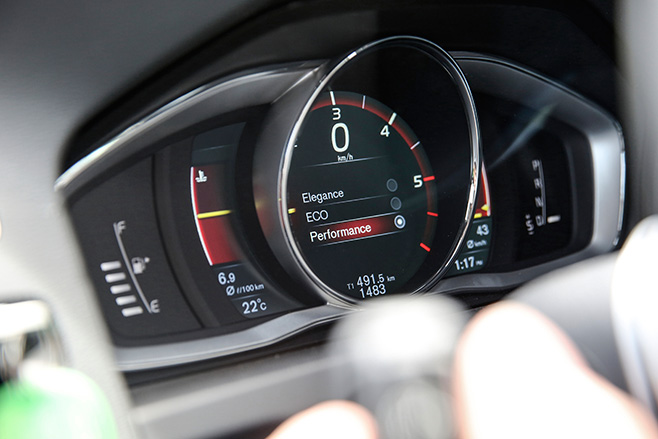
But wait, there’s more! (I’m really on a roll with this sales caper now). Drive-E also features Eco Coast mode that, contrary to what its name implies, doesn’t turn you into a bleach-haired, Hawaiian shirt-wearing long-boarder but instead helps maintain the car’s kinetic energy by deactivating engine braking and dropping engine revs to idle speed under certain conditions (ECO+ button activated; accelerator pedal fully released; auto transmission in D, not Sport; cruise control off; road not steeper than six percent gradient, etc).
I contemplated going on about the V60’s safety features – it’s a Volvo after all – the acronyms for which stretch around the block and back, but their eyes had glazed over a little. “To hell with the steak knives,” I thought, “I’m going in for the kill.”
“If you could just sign here, Mrs Bulmer, we’ll have your V60, with complimentary cushion for your derriere, ready to go in just a few minutes. Would you care for paint and fabric protection with that?”
What are my options?
The seven-variant V60 range starts at $57,890 for the D4 Kinetic, stretching all the way to the $102,990 Volvo V60 Polestar.
In this mid-spec ‘Luxury’ grade, the Swedish wagon comes laden with plenty of standard kit, but like all good press cars, this example is further enhanced with options that raise its list price from $62,890 to $70,015. The extra coin buys heated front seats ($375), metallic paint ($1750) and the Driver Support Pack ($5000). The latter comprises a bundle of useful features including (deep breath): Blind Spot Information System (BLIS) with Cross Traffic Alert; Driver Alert System (Lane Departure Warning, Lane Keeping Aid, Active High Beam Control, Forward Collision Warning and Road Sign Information); Adaptive Cruise Control with Full Autobrake; front and rear parking sensors; auto-dimming interior and side mirrors. This is in addition to the V60 Luxury’s navigation with voice control, cornering headlights with washers and 18-inch alloys.
Update 1
The art of boot-packing challenges Father Bulmer.
Think Volvo wagons and the image that springs to mind, at least for those of us born before Gen Y, is of fridge-swallowing bricks on wheels that were long on practicality but short on style. The Volvo 740 could house a Euro-pallet in its luggage bay, for Pete’s sake!
But the lumbering, underpowered and indestructible tanks of yesteryear have been replaced by modern machines that are more stylish affairs, thanks to Volvo’s determination to shake off its fusty image, with a focus on design that began with the hiring of talented crayon twirler Peter Horbury in 1991. The Brit has long since moved on, but his legacy lives on in a range of vehicles that boast a polished and distinctive design language.
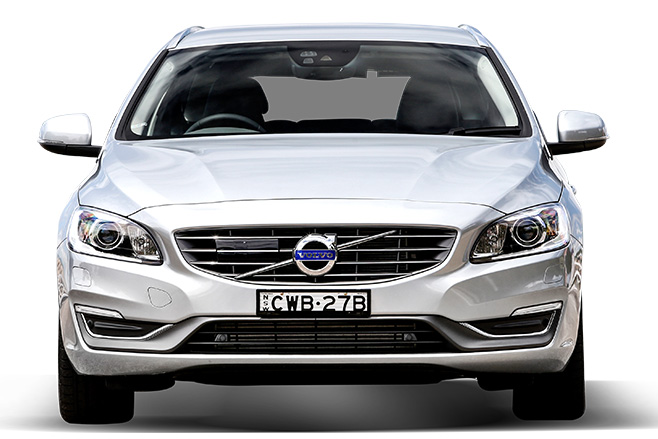
In the case of the V60, which is simply the handsome station wagon version of Volvo’s second-generation S60 sedan, this entails market positioning that’s more ‘sportwagon’ than load lugger.
In industry parlance, the V60 is a compact mid-size wagon and is pitted against fellow European estates such as the BMW 3 Series Touring and Audi A4 Avant. In practical terms, this positioning ensures a not overly large 430-litre boot and a fairly compact rear seat, so our first family trip away in the D4 long-termer was always going to be a test of carrying capacity, packing skills and patience.
We Bulmers aren’t known for travelling light – we’ll take the kitchen sink and the blender too, given the chance – so a simple long weekend away can take on the logistical look and feel of a minor military manoeuvre.
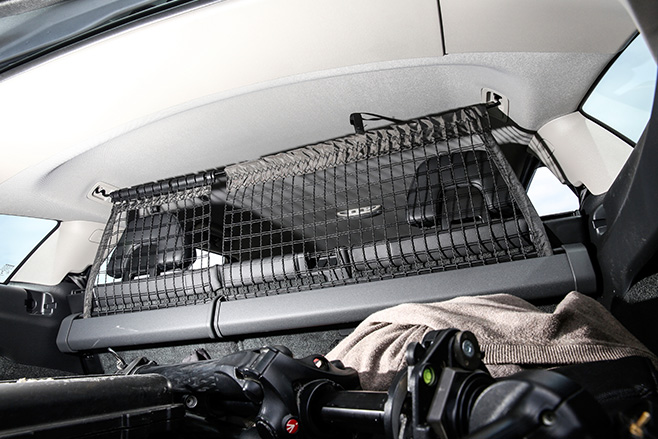
Hence why, halfway through jamming the intimidating pile of bags, scooters, skateboards and bazookas into the V60’s modestly proportioned derriere, I began to wonder if it was too late to add a roof pod to the options list. It was, so I unloaded and knuckled to the task of whittling down the load before repacking it.
In the process, I was pleasantly surprised to discover something missed in my haste to pack and go – those clever Swedes have thought of just such an eventuality and built a neatly integrated cargo net into the backs of the rear seats. The net pulls up out of a cartridge that runs the width of the cargo bay, clipping into mounts in the roof lining. It’s a handy feature as it enhances the amount of available space by enabling you to pack higher without fear the kids will cop a Samsonite tattoo under heavy braking. With the help of the magic net, both the bocce set and the budgie cage made the cut.
The Volvo V60 may not boast the pallet-swallowing ability of its box-like predecessors, but it has them well and truly covered in the style stakes, while also adding some neat practical touches.
Update 2
An unwelcome light show spoils an otherwise revealing ride.
The sale of my father-in-law’s vineyard (sob!), and the need to help with the pack-up and clean-out of a weekender steeped in 35 years of memories, has meant several hundred kilometres of country driving since our last update.
This new driving environment has thrown up some interesting observations. For one, the V60 Luxury’s ride. In my view, it’s too firm for its family and urban orientation. While those handsome, diamond-cut 18-inch alloys look the part, they pick up every lump, bump and ridge to be found when driving in town. But the discipline of the Euro-spec suspension suddenly makes sense on lumpy back roads, paying dividends in terms of roadholding and dynamics.
That’s not to say the V60 won’t still snot a sharp-edged pothole with all the gusto of an angry nightclub bouncer, but along the demanding, red-gum-fringed roads in question, it was pleasing to discover that ride comfort has at least been sacrificed for impressive grip and body control that keep things tidy when pressing on.

A not-so-positive revelation from the nocturnal component of these journeys is the distracting light show created by the V60’s clever headlights. For me, the jury is still out on the real driver benefits of what Volvo calls Active Bending Bi-Xenon Lights (ABL). Conceptually, active headlights make sense as they mean the driver doesn’t have to manually switch between high and low beam for oncoming traffic. Plus, the system compensates for load, braking and acceleration, all of which helps ensure fewer cranky drivers flashing you for blinding them with your dazzling peepers.
However, I’m yet to drive a car fitted with active headlights that gets beam selection right as often as you can manually. In the Volvo’s case, the system seems frustratingly hyper-inclined to dip to low beam more often than is absolutely necessary, while the active bending bit adds a motorised element that means the lamps follow the way you steer, turning up to 15 degrees in either direction.

As you might imagine, on ducking, diving and tree-lined country roads, with the ever-present threat of moving wildlife, the combination of headlights that dip automatically and follow your every steering move can be a tad distracting. In fact, downright bloody annoying might be more to the point.
In effect, the technology creates a shadowy, dancing light parade as the beams shift, shimmy and adjust to reflections from signage, oncoming traffic and what you’re doing with the steering wheel, meaning the headlights become a show unto themselves.
Fortunately, the Volvo’s driving position and seat comfort are both excellent, so while the dancing lights proved an unnecessary and unwelcome distraction, the overall comfort of the cockpit ensured it was a good space to spend a few night-time hours.
Update 3
Ged reaches the age when it’s the small things that matter.
Ever noticed the size of Toyota switchgear? Surely I’m not the only one to realise that Camry switches are apparently designed for the massive thumbs of Sissy Hankshaw, lead character in Tom Robbins’ novel Even Cowgirls Get the Blues.
But after years of deriding Toyota’s big, chunky buttons as being like the over-sized key-pad on a pensioner’s phone, it’s recently started to make sense to me.
You see, having stuttered past a milestone our test cricketers seem incapable of achieving – the half-century, not 16 – I’ve begun to notice the drop-off in my eyesight. My distance vision is still terrific, but the close-range performance of my previously 20-20 peepers is undoubtedly on the wane.
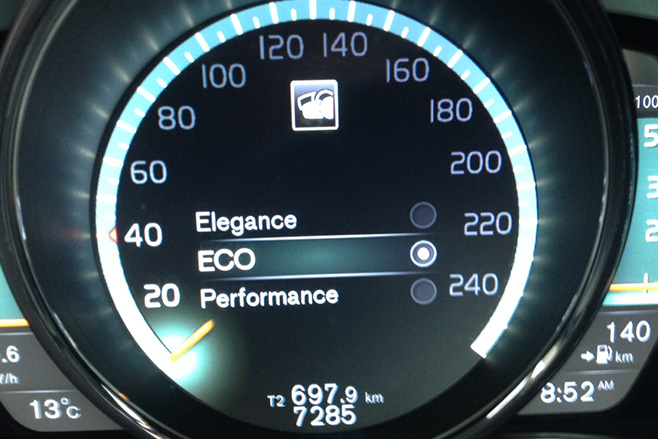
It happens to the best of us. In fact, medical science has a name for this visual degeneration, presbyopia, which a learned website tells me is Greek for ‘old man eyes’. Charming!
The talented Michael Stahl penned a wonderful column on this topic a few years ago, referencing the physiological drop-off in reaction time, vision and other skills that comes with ageing. At the time I felt for “poor old Stahly” – despite us being the same vintage – and assumed that his hard life versus my strict ‘the body is a temple’ (ahem!) approach must have been the difference. It wasn’t.
Joining the growing-long-arms department has led me to question the V60’s tiny switchgear. Seriously, you need to have the tactile skills of an eye surgeon to operate these things. Perhaps the Swedes are so genetically superior they don’t ‘do’ macular degeneration. After all, this is the blue-eyed, blonde-haired race that’s given us Anita Ekberg, Victoria Silvstedt and Agnetha from ABBA.
But I’m sorry Hjalmar, or Thorsten, or whatever the bloody interior designer’s name is, we middle-aged Aussies have fat little fingers and squinty-poor eyesight, so your close-clustered, near-invisible buttons do not please us.
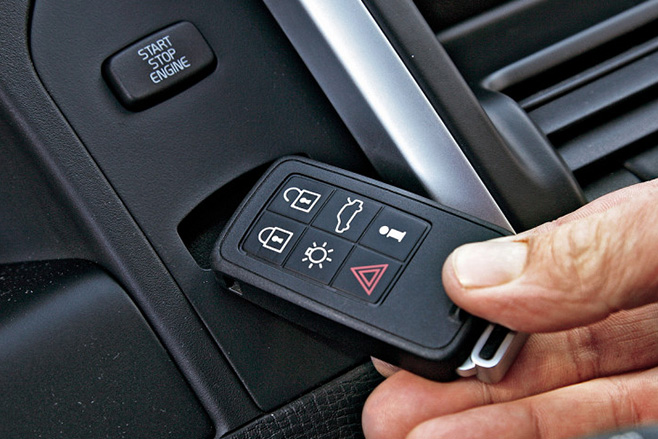
I’ve at least worked out how to switch the handsome and (thankfully) highly visible LED dash between its different themed displays. In fact, I’ve channelled my inner Sigmund Freud and started an experiment to see how the various colours affect mood, to kill time on my 45-minute commute.
The jury is still out on whether driving in ECO, with the dash glowing a gentle green, makes me any softer on the loud pedal, or if switching to Performance has me angrily flipping other drivers the bird and attracting speeding tickets.
But what I can say for certain is that, when running in vivid-red Performance mode, on a Monday morning, en route to work, I’m a right cranky old bastard.
UNLOCKING THE MYSTERY
THE little battery in the V60’s key fob (pictured above) must be on its last legs because it now only works when I’m standing right next to the car and pointing the key directly at the interior. Makes you realise what a convenient feature keyless central locking is… and to ponder why the V60, which is otherwise so well appointed, lacks this increasingly popular (and increasingly standard) feature.
Update 4
We wanted the Volvo V60 to be a real turnip for the books, but was it really?
In automotive terms, we here at the Bulmer household pride ourselves on being an equal opportunity employer. By that I mean we hold no prejudice for automotive ethnicity. Germans, Japanese, Aussies (an endangered species, granted), Koreans, and obviously Scandinavians; we welcome them all. Vehicular biodiversity, if I can put it that way, is embraced.
So, back in 2010 , when plucky Saab, under the misguided stewardship of General Motors, finally sank through an automotive ice hole, it left Volvo as the sole flag-bearer for Sweden, under the protective wing of Chinese giant Geely. That ‘last-Swede-standing’ status makes me feel slightly protective towards Volvo, and Swedes in general, to the point I regularly give my old Roxette cassettes a good cranking and insist my young daughters master the art of assembling their own bedroom furniture.
I’d also hoped that a decent stint in Volvo’s mid-size sports wagon could shift my feelings from simple optimism for the company’s prosperity to genuine admiration for the product.
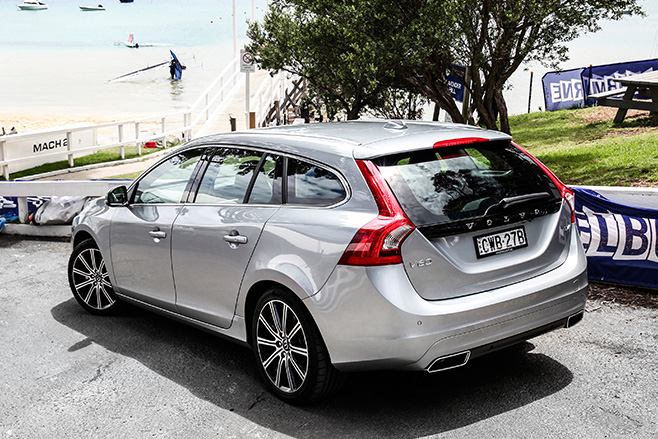
So where does that leave me after six months? I’d put the V60 at the upper end of a pass mark, but short of a distinction.
Let’s recap the car’s strengths and the elements in which it managed to endear itself. First up, I liked the exterior styling – its distinctive Volvo signatures, the bonnet line that falls away towards the nose to avoid being too blocky, the solid four-square stance and flared waistline. Inside, the soft, fragrant leather welcomed, and my daughters – who are always impeccably behaved, and quiet as church mice, provided, of course, they’re bound and gagged – appreciated the integrated booster seats. Up front there was a lot to like about the Swedish sense of design aesthetic, though this often didn’t translate into ergonomic or operational sensibility. At least the seat’s memory positions for two drivers was appreciated, given the height disparity between The Good Wife and myself. A one-button press to raise her to the prescribed height quickly allowed her optimum vision of the road ahead, and also helped the cabin acoustics better reflect her dulcet tones as she sang along sweetly to her Enya CDs.
But then there was the packaging issue. You’ll know by now that the Bulmer clan has yet to learn the art of travelling light – Sherpas have been known to see us coming and turn tail, shouting, “No boss! Load too big! Yak will break!” So as a family we often found the V60 – especially having transitioned from the capacious Mercedes ML wagon – a little on the tight side.
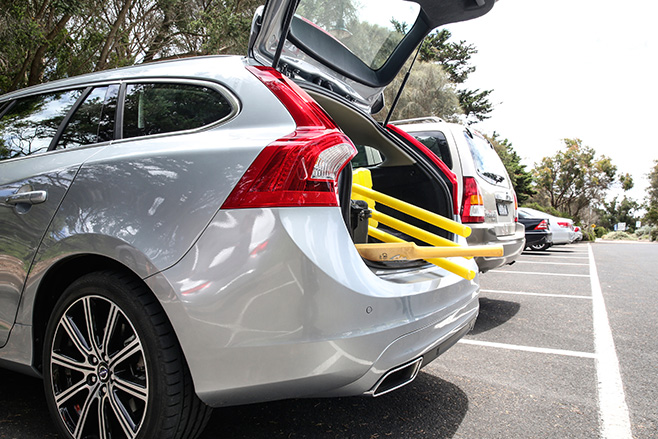
Once we were on the open road, the V60’s decent body control was always appreciated; it’s just a shame it came at a cost in terms of the car’s ride compliance around town. The thumping and jarring at urban speeds was not a compromise that I ever grew to willingly accept.
Then there’s the powertrain, promising diesel efficiency further improved by the ‘Drive-E’ technology suite of fuel-saving features. Good in theory, but four-cylinder diesels have made massive leaps in the last few years and Volvo’s 2.0-litre falls short by comparison. It sounds and feels a little old-school in its grumbly idle and gruff mid-range under full throttle, though the performance was never anything less than pleasing. Still, the new-generation twin-turbo 2.0-litre diesel (165kW/470Nm) fitted to the new XC90 is positively gagging for a home in the V60.
Speaking of the Volvo XC90, a recent quick spin in this all-new (and wholly developed under Geely’s control) model shows exactly what Volvo is now able to deliver. Rather than chase sporty dynamics, this large SUV features beautiful interior detailing, clever packaging and a relaxed driving experience. Our V60 was a loyal family friend, and the future is clearly bright for Volvo.



